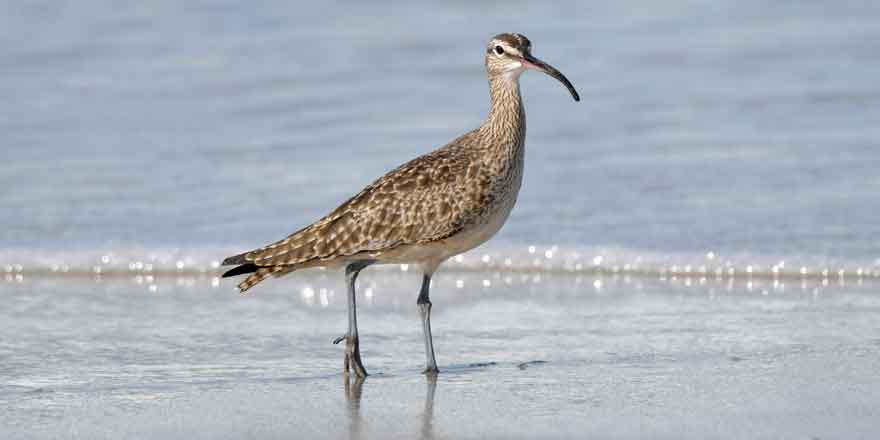
Birds of Clare Island: Eurasian Whimbrel
17 August 2020On Day 3 of Heritage Week we introduce a typical spring and autumn passage migrant featuring in New Survey of Clare Island, vol. 9: Birds.
The ninth volume in the New Survey of Clare Island series focuses on the birds of Clare Island and is being released on 17 August as part of Heritage Week. Join us during Heritage Week and learn about some of the many birds that populate the island.
Today, you can read the entry on the Eurasian Whimbrel as it appears in Chapter Two of New Survery of Clare Island, vol. 9: Birds. Chapter Two contains an inventory of the birds of Clare Island, and this is compared with the findings of the first survey conducted during 1909–11. The list comprises records that span the period from 1887 to 2018.
Eurasian Whimbrel Numenius phaeopus (Linnaeus)
Passage migrant in spring and autumn.
This species is a typical spring and autumn passage migrant with perhaps more birds in the spring than during the return migration in the autumn (Ussher 1912; Hutchinson 1989; Ruttledge 1994; see also Alves et al. 2016). In the current survey birds were seen in late April 2000, May 2001, late August 2002 and early September 2005; whimbrels were not seen during the mid-June survey of 2013 (Coombes unpublished data; Kelly unpublished data). The whimbrel was not recorded during any of the atlas surveys (Sharrock 1976; Lack 1986; Gibbons et al. 1993; Balmer et al. 2013).
In recent surveys the maximum number seen was 15 on 29 April 2000 (Coombes unpublished data). However, McGeehan (2018) shows a very large flock (by known Clare Island standards) of ≥ 21 birds which he photographed on 18 May 2014. It appears that during very heavy rain, and poor visibility, large numbers of whimbrels interrupted their journey northwards and ‘sat out’ the difficult conditions until the storm passed (McGeehan 2018).
On 3 September 2005 three whimbrels (two adults and a juvenile) were seen foraging in the littoral at Kinincorra, effectively a very small storm beach with perfectly rounded ‘boulders’ (9–22cm in diameter) closely grouped together like billiard balls. The adult whimbrels, but not the juvenile, were systematically and elegantly searching for prey under the cobbles, their decurved bill being perfectly adapted to exploiting this habitat; each whimbrel would slide its bill down the curved side of the cobble and probe the soft substrate underneath. A small crab was one identified prey item thus captured.
Image credits: R.T. Mills
About the book:
Explore Clare Island’s avifauna, including the seabirds, land birds and waterbirds, and investigate the curious absence of breeding rooks from the island. This volume features a systematic list comprised of records of bird sightings that stretch from 1887 to 2018. The result of almost 20 years of fieldwork, it is an invaluable source for future monitoring of birds on Clare Island and beyond.
The first Clare Island Survey of 1909–11 was the most ambitious natural history project ever undertaken in Ireland and the first major biological survey of a specific area carried out in the world. The ‘Birds’ paper included in that survey was written by Richard J. Ussher and was based on fieldwork conducted on the island between 1909 and 1911. Ussher’s ‘Aves’ paper, however, also summarised details of the avifauna of a wider area in the west of Ireland—mainly the Counties of Galway and Mayo—a theme that was revisited several times by the late Major Robert F. Ruttledge. The current ‘Birds’ volume focuses exclusively on Clare Island and applies modern methods of census.
Buy the book here.
About the project:
The New Survey of Clare Island is a unique multidisciplinary project, the overall aim being to assess the environmental changes that have taken place over the last hundred years on Clare Island. Together with Robert Lloyd Praeger’s first Clare Island Survey, the New Survey provides an invaluable body of research informing future conservation of natural and built heritage of Ireland and Europe.



